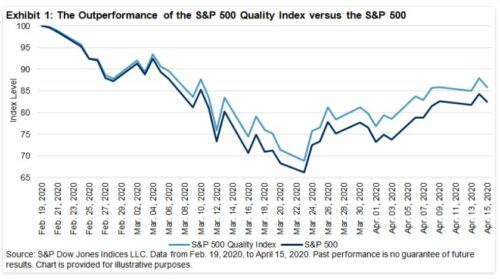“Maybe life is random, but I doubt it.”
–Steven Tyler

There’s a news radio station in Fort Worth that has almost all of its daytime weekend programming related to money, investing, and personal finance. It’s almost like the programming folks at CNBC decided to take over this radio station on the weekend, because, unless the Texas Longhorns are playing, you can tune in to this station and listen to money advice to your heart’s content.
I imagine that if someone listens to those shows long enough, he’ll become convinced that he knows more than the average Joe and can go into the markets and actively trade and make a mint.
Unfortunately, this would likely result in a sad ending for the listener, as 64% of individual stocks underperform the Russell 3000 index in their lifetimes.
Last year, I evaluated how well the S&P 500 index did compared to randomly picking a stock out of the components that make up the index. In 2012, 54.1% of the components of the S&P 500 underperformed the index as a whole, leaving individual stock pickers with thinner wallets than their index investing counterparts.
But, just like fans of all sports teams except the champion, there’s a rallying cry: “Wait until next year!”
So, 2013 has now come and gone. The S&P 500 performed markedly better, gaining 29.6%, compared to 2012’s 11.7% gain.
Surely, given the improvement in the performance of the index, it was a better year to pick individual stocks.
Right?
Right?
2013 Performance of the S&P 500’s Stock Components by the Numbers

To compare the performance of the components, I took the 481 stocks which remained in the index throughout all of 2013, eliminating either new entrants or spinoffs. I then looked at the opening prices on January 2, 2013 and the closing prices on December 31, 2013 to see how well each stock performed over the past year. If the performance was better than the 29.6% average, then it was a winner. If not, it was a loser.
In total, 233 stocks outperformed the average, or 48.44% of the components exceeded the 29.6% gain in 2013.
If you picked a winning stock, you probably got a return between 30% and 70%, and even if you picked a “losing” stock, you still turned in a gain, as only 51 stocks showed a loss on the year.
4 stocks lost more than 30%, while 17 stocks gained more than 90%.
Let’s look at the David Letterman Top 10 and the Bob Uecker Bottom 10 stocks for 2013.
The top 10 S&P 500 stocks for 2013
|
Ticker |
Change |
|
NFLX |
286.69% |
|
MU |
229.55% |
|
BBY |
228.50% |
|
ETFC |
114.18% |
|
PBI |
112.20% |
|
CELG |
110.89% |
|
BSX |
105.12% |
|
GILD |
102.10% |
|
YHOO |
100.20% |
|
GNW |
99.87% |
The bottom 10 S&P 500 stocks for 2013
|
Ticker |
Change |
|
PPG |
-65.73% |
|
NBL |
-63.12% |
|
NEM |
-51.35% |
|
CLF |
-34.69% |
|
BTU |
-29.26% |
|
EW |
-28.46% |
|
TDC |
-27.94% |
|
FISV |
-26.44% |
|
ISRG |
-24.17% |
| BWA |
-23.92% |
Even though 2013 was a better year for the random stock pickers – a 48.44% chance of being right in 2013 versus a 45.86% chance in 2012 – it still wasn’t as good as simply investing in the index and letting the money ride.
Throw a dart for 6 years with a 48.44% chance of hitting a winner each year, and you’ll have a 1.3% chance of being a winner all six years.
Those aren’t odds I like.
Still tempted to invest in individual stocks? Let’s talk about it in the comments below!
Author Profile
- John Davis is a nationally recognized expert on credit reporting, credit scoring, and identity theft. He has written four books about his expertise in the field and has been featured extensively in numerous media outlets such as The Wall Street Journal, The Washington Post, CNN, CBS News, CNBC, Fox Business, and many more. With over 20 years of experience helping consumers understand their credit and identity protection rights, John is passionate about empowering people to take control of their finances. He works with financial institutions to develop consumer-friendly policies that promote financial literacy and responsible borrowing habits.
Latest entries
 Low Income GrantsSeptember 25, 2023How to Get a Free Government Phone: A Step-by-Step Guide
Low Income GrantsSeptember 25, 2023How to Get a Free Government Phone: A Step-by-Step Guide Low Income GrantsSeptember 25, 2023Dental Charities That Help With Dental Costs
Low Income GrantsSeptember 25, 2023Dental Charities That Help With Dental Costs Low Income GrantsSeptember 25, 2023Low-Cost Hearing Aids for Seniors: A Comprehensive Guide
Low Income GrantsSeptember 25, 2023Low-Cost Hearing Aids for Seniors: A Comprehensive Guide Low Income GrantsSeptember 25, 2023Second Chance Apartments that Accept Evictions: A Comprehensive Guide
Low Income GrantsSeptember 25, 2023Second Chance Apartments that Accept Evictions: A Comprehensive Guide

